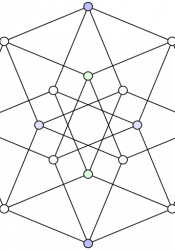More modern notions of geometry and space developed
During these centuries, the mathematical understanding of geometry and space expanded from the plane to n-dimensional Euclidean space and non-Euclidean space. Although none of Euclid’s Elements was deemed incorrect, during the 17th century mathematicians Desargues and Pascal realized that Euclidean geometry was a special instance a more general type of geometry: projective geometry. However, the work of these two mathematicians was not given much attention until the 19th century when their works were rediscovered independently by geometers of that time. Further, the 19th century saw a greater expansion and generalization in the understanding of geometry: the works of Gauss, Riemann, and others developed ideas like the manifold (objects that behave locally like Euclidean space) and curved spaces. Likewise, instead of working in the plane mathematicians were concerned with the aforementioned generalized spaces. More importantly, these new conceptions of space became well-established in standard mathematical instruction by the end of the 19th century.
Sources
Kline, Morris. “Projective Geometry.” Scientific American, vol. 192, no. 1, 1955, pp. 80–86., doi:10.1038/scientificamerican0155-80.
Shearer, Rhonda Roland. “Chaos Theory and Fractal Geometry: Their Potential Impact on the Future of Art.” Leonardo, vol. 25, no. 2, 1992, pp. 143–152., doi:10.2307/1575702.
The image is from Wikimedia Commons and in the public domain.

